- Blastocyst culture and day 5 embryo transfer for in vitro fertilization allows selection of the best quality embryos for transfer
- Embryo quality is important with infertility
- With blastocyst transfer, we transfer fewer embryos – reducing multiple pregnancy risks, and maintain high IVF success rates
Definition of a blastocyst
- An embryo that has developed for five to seven days after fertilization and has 2 distinct cell types and a central cavity filled with fluid (blastocoel cavity)
- The cells in a blastocyst have just started to differentiate
- The surface cells that surround the cavity (just under the outer shell) are called the trophectoderm and will later develop into the placenta
- A more centrally located group of cells – the inner cell mass, will become the fetus
Blastocyst development
The most commonly used indications for assisted hatching with an in vitro fertilization case are:
- The blastocyst usually forms on day 5 as fluid builds within the compacted morula
- A healthy blastocyst often begins hatching from its outer shell, called the zona pellucida between day 5 to day 7 after fertilization
- Within 24 hours after hatching, embryo implantation after IVF (or a “natural” pregnancy) begins as the embryo invades into the uterine lining
- The blastocyst releases HCG hormone (the pregnancy test hormone) which leaks into the mother’s blood as the embryo implants
Blastocyst formation rate
-
- The goal of in vitro fertilization and embryo culture is to provide high quality embryos which are capable of continued development and result in live births
- However, under standard IVF culture conditions, only about 25 to 60% of human embryos progress to the blastocyst stage after 5 days of culture
-
- The low rate of embryo development has 2 main causes:
- A less than optimal culture environment in the lab dish
- The inherent “weakness” of human embryos
Therefore, in the past embryos were transferred to the uterus after 2 or 3 days
Advantages of blastocyst transfer for IVF
- One problem with this is that 2 to 3-day-old embryos are normally n the fallopian tubes, not in the uterus. The embryo gets to the uterus about 80 hours after ovulation.
- Embryo implantation process begins about 3 days later – after blastocyst formation and hatching out of the embryonic shell have occurred.
- Therefore, if in vitro culture conditions are maximized so healthy blastocysts form at a high rate, then day 5 blastocyst embryo transfer can be done.
- The uterine lining on day 5 should be receptive to the arriving embryo – this a more “natural” time for the embryos to be in the uterus. It is the same timing as with a natural pregnancy.
- The transfer is done shortly before the time for actual invasion and implantation
Pregnancy rates and reduce risks for multiples
- Transferring blastocysts following IVF also provides another potential benefit – reducing possibility for multiple pregnancy
- Many 2 or 3-day-old embryos do not have the capacity to become high quality blastocysts and make a viable pregnancy. However, on day two or three of culture we don’t have methods to determine which embryos will be viable long-term, and which will soon arrest their development.
- By culturing embryos to day 5 we will find that some of them have not become blastocysts – allowing us an opportunity to choose the most competent embryos for transfer.
- We can then transfer fewer embryos and still obtain high pregnancy success rates – with very little risk for having high order (triplets or higher) multiple pregnancies.
Extended in-vitro culture systems
- In the past, it was difficult to get high quality blastocysts with in vitro culture systems – unless “feeder” cells were utilized – called coculture.
- However, since 1998 more advanced culture media have been commercially available that (if used properly) can yield high blastocyst formation rates.
- Now blastocyst embryo transfer is a viable IVF treatment option for many couples
Disadvantages of blastocyst transfer
- If the IVF clinic is proficient at blastocyst culture and has excellent quality control in the laboratory, there is potentially no disadvantage to day 5 blastocyst transfer.
- However, if the culture environment is suboptimal, delayed embryo development and even embryonic arrest will occur in some cases.
- Therefore, if the culture system and laboratory quality control are inconsistent – good results will not be obtained with extended culture to day 5.
- Such programs will do better with day 3 transfers – putting back embryos earlier, before they are “stressed” excessively by the weak culture environment.
- Another possible disadvantage – some clinics charge more for day 5 transfer
Information provided by and last updated on (6/12/2019) by: Mohamad Irani, MD
Dr. Mohamad Irani is a reproductive endocrinologist and infertility specialist.






